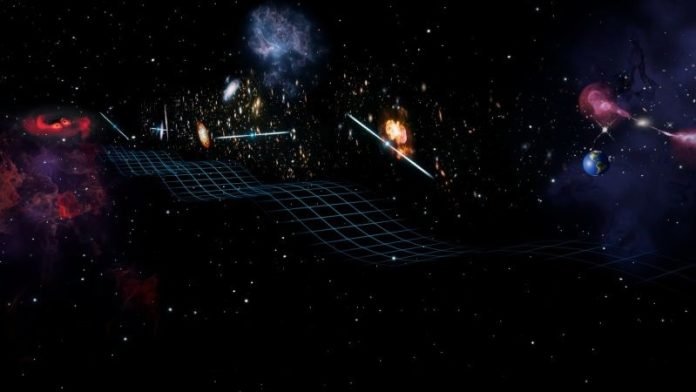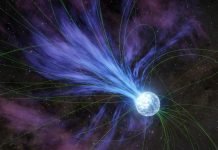
Have you ever imagined that everything around us, including ourselves, is slowly getting bigger and smaller?
It may sound bizarre, but according to a recent study by a team of researchers with the U.S. National Science Foundation’s NANOGrav Physics Frontiers Center, this is exactly what’s happening!
The reason behind it is the mind-bending effect of something known as gravitational waves, which are moving through our galaxy.
The researchers’ exciting discoveries have just been published in The Astrophysical Journal Letters.
The NANOGrav team, a collection of brainy individuals from over 50 institutions worldwide, studied special stars known as millisecond pulsars.
These are stars that have exhausted their fuel, spinning incredibly quickly, hundreds of times every second! They send out radio signals at regular intervals, like the ticking of an ultra-precise cosmic clock.
By examining data from over 60 pulsars collected over 15 years, the researchers discovered some weird fluctuations in the pulsars’ ticking rates.
They concluded that these variations are due to gravitational waves, invisible ripples in the very fabric of the universe known as spacetime.
The team discovered that the effect of these gravitational waves is to make it look like the pulsars’ ticking rates are changing. In reality, it’s the gravitational waves stretching and compressing the space between Earth and the pulsars.
This warping of space causes the pulsars’ radio signals to reach Earth tiny fractions of a second earlier or later than we would usually expect. This observation gives us our first evidence of a cosmic soup of gravitational waves, a concept long hypothesized by scientists.
Almost a century ago, Albert Einstein predicted the existence of gravitational waves, but it took us until 2015 to confirm their existence.
The LIGO observatory detected gravitational waves coming from the merging of two distant black holes, but those waves were much smaller.
The changes in spacetime detected by the NANOGrav team, however, are equivalent to the length of a football field, caused by gravitational waves so massive that the distance between their peaks is a staggering 9-90 trillion kilometers!
“These are by far the most powerful gravitational waves known to exist,” said astrophysicist Maura McLaughlin, a key player on the NANOGrav team. She added that discovering such massive waves required a colossal detector and a lot of patience.
By scrutinizing 15 years of data from several observatories, the team created a network of 67 pulsars distributed all over the sky. They compared the ticking rate of pairs of these pulsars and concluded that the gravitational wave background was causing these strange shifts in timing.
“These low-frequency gravitational waves likely come from pairs of incredibly massive black holes orbiting each other in distant parts of the universe,” explained Stephen Taylor, another member of the NANOGrav collaboration.
The team’s research is providing new insights into how galaxies change over time and how enormous black holes grow and merge.
It also suggests that these massive black hole pairs might be quite common, possibly numbering in the hundreds of thousands or even millions.
The NANOGrav team hopes to identify specific black hole pairs by tracing the gravitational waves they emit, potentially even finding evidence of gravitational waves from the very early universe.
Xavier Siemens, a co-director at NANOGrav, compared the detection of gravitational waves to hearing a cosmic orchestra. He said, “As we keep listening, individual instruments will come to the fore.”
This means that as they keep studying, they will learn more about the source of these gravitational waves and, in doing so, unveil more secrets of our universe.
Follow us on Twitter for more articles about this topic.




